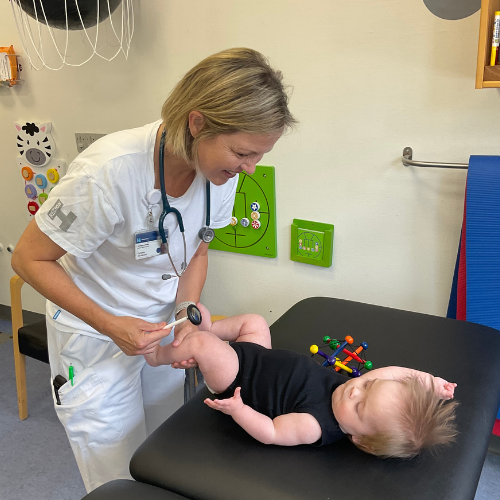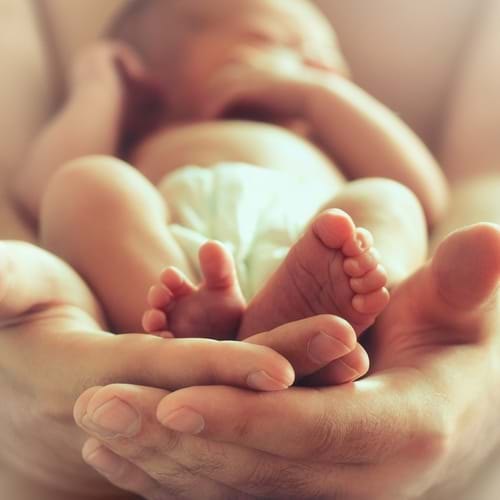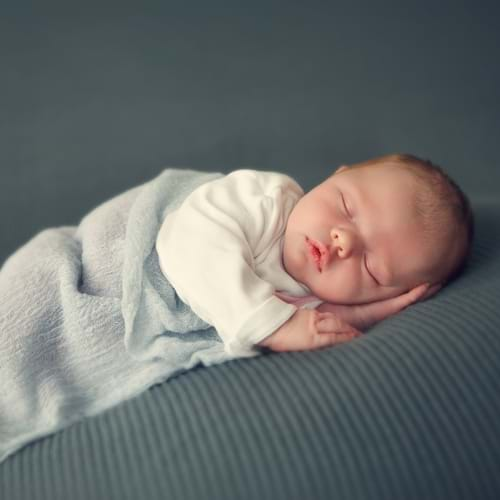Project at Rigshospitalet: New national guidelines aim to enable earlier CP diagnosis
New guidelines will make it easier to detect Cerebral Palsy (CP) at an earlier stage. The guidelines will soon be sent to paediatric departments across the country and are based on an extensive research project in which more than 200 children suspected of having CP have been examined using both national and international testing methods.
“I believe we can become more accurate in diagnosing CP, and that we can diagnose it earlier,” says senior physician and professor Christina Høi-Hansen. Since 2023, she and her team at the CP Clinic at Rigshospitalet have been leading a major research project (CP-EDIT), supported in part by the Elsass Foundation. The aim is to lower the age at which CP is diagnosed, improve outcomes, and test a new screening and training programme.
In Denmark, children with CP have often not received a diagnosis until around 13 months of age. But according to researchers and clinicians, earlier intervention is crucial. It can significantly support and improve children’s daily lives and motor skills, and help parents care for a child who has CP.
Based on CP studies from abroad, Høi-Hansen’s research group identified several areas where Denmark could improve in determining which children should be assessed for CP and which methods should be used.
Over the past few years, she and her research team have worked intensively to put together a screening programme for children suspected of having CP. The programme incorporates the best international and national testing and training methods and has been tested at four paediatric departments in Denmark.
Since the project began, more than 200 children suspected of having CP have been examined using these methods. Høi-Hansen and her colleagues are now preparing a provisional national guideline for a screening and training programme, based on the knowledge gained in the first two years of the project. The goal is to have it implemented in all Danish paediatric departments within the next year.
“We hope that with a targeted, multidisciplinary set of tests we can diagnose CP earlier than we do today. At the same time, we can better support families, help them start the right training, and give them more knowledge about what to look out for in their child,” says Høi-Hansen about her expectations for the new guidelines.

Christina Høi-Hansen is Professor of Paediatrics and senior clinician at the Department of Children & Adolescents, Rigshospitalet. PHOTO: Clinic for Cerebral Palsy, Rigshospitalet.
“We hope that with a targeted, multidisciplinary set of tests we can diagnose CP earlier than we do today. At the same time, we can better support families, help them start the right training, and give them more knowledge about what to look out for in their child."
Piecing the puzzle together
The first part of the study involved identifying the best testing methods and defining what a Danish screening and training programme should include. The second part focused on testing this knowledge in clinical practice.
The first assessments were carried out when the children were 3-4 months old, the age at which many CP diagnostic methods work best. Some children did not meet the criteria for CP and will only be followed up at age two, while those with stronger indications of CP have been assessed every six months.
“Getting a CP diagnosis often involves piecing together many ‘puzzle pieces’ before the diagnosis can be made. By creating this package of different tests, we have tried to provide the best possible basis for describing the child’s condition,” says Høi-Hansen.
The screening package includes both motor and neurological tests, MRI scans, and in some cases genetic testing, so that a diagnosis and any underlying causes can be confirmed or ruled out quickly and reliably.
New knowledge about genetics
According to Høi-Hansen, very few previous studies have carried out genetic testing on children as young as 3-4 months. This project has therefore produced completely new genetic data that may shed light on the relationship between CP and genetics.
“We don’t yet have the final numbers, but we expect that 20-30% of the children have a genetic background that increases their risk of CP. That is a much higher proportion than previously thought,” says Høi-Hansen and explains:
“A child’s genetics can either directly explain why they have CP, or why they are vulnerable to, for example, complications during birth. This helps us explain to families what has happened. It also means we don’t have to look for other causes and can advise the family if they are considering having more children,” she says.
Høi-Hansen and her team have also become very interested in the fact that signs of CP can be detected much earlier than previously assumed.
“When you carry out these specialised motor assessments, you can see much more at 3 months of age than with the previously used methods. Sometimes it’s immediately obvious that the child has CP,” says Høi-Hansen.

Christina Høi-Hansen has led the CP-EDIT research project since 2023, in collaboration with Aarhus University Hospital, Herlev Hospital, and Aalborg University Hospital. PHOTO: Elsass Foundation.
Feedback from parents
Involving parents has been an important part of the project. This has included interviews with parents to gather their perspectives on having a child who might have CP and being offered targeted training.
Parents were also asked how best to communicate information about CP, and Høi-Hansen says it has been very interesting to hear their feedback on wording.
“For example, many parents react strongly to the term ‘high risk,’ while for many doctors that phrase is essential for describing the need for further investigation,” she says and explains that there are dilemmas in a project like this:
“For some families, it’s difficult because the examinations inevitably stir up a lot of emotions. We try to give concrete answers, but some parents may become unnecessarily stressed or worried. On the other hand, many families appreciate having clarity and concrete recommendations for training and support they can begin right away,” says Høi-Hansen.
A new clinical routine
So far, the project has been recruiting children for two years. They will be followed for another two years, meaning the final results will be available once all the children turn two. At that point, Høi-Hansen will also be able to see whether the initiative has succeeded in lowering the diagnosis age.
The research team is already analysing parts of the project, such as the 3-month examination, which all children underwent. They are also evaluating results from the follow-up project GO-PLAY, in which half of the children with or at risk for CP, selected by lottery, were offered individual physical training with a physiotherapist.
In addition, Høi-Hansen and her colleagues at the four paediatric departments are working to distribute the provisional screening and training guidelines to all 18 paediatric departments in Denmark. The guidelines can be adjusted if new knowledge emerges over the next two years.
The aim is for the project to become a permanent national collaboration, integrated into daily clinical routines and giving paediatricians more tools to support a CP diagnosis.
“With this screening programme, doctors will have more tools to make the diagnosis. This means that children with CP can be identified earlier, and others can be spared the worry of a possible diagnosis,” says Høi-Hansen, adding that she is very grateful for the positive reception the project has received across the country.
“It has been a lot of work to collect and share all this CP knowledge and to integrate it into everyday clinical work in collaboration with the four departments. But we have had strong support from both professionals and families. That’s why it’s so encouraging that we can soon bring the guidelines into practice in paediatric departments across the country - so we can work together to reduce the time to diagnosis for CP,” she concludes.
The project is supported by the Elsass Foundation, Rigshospitalet, and the Danish Physiotherapists’ Fund for Research, Education, and Practical Development.




